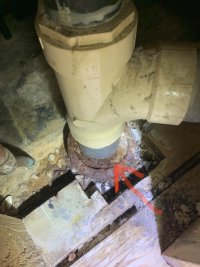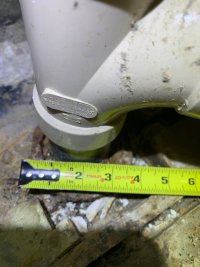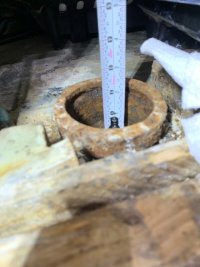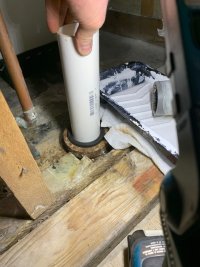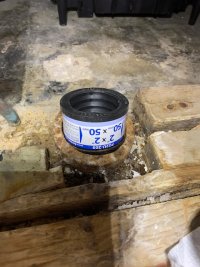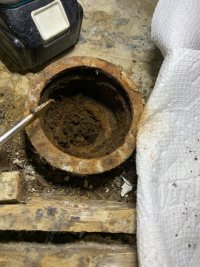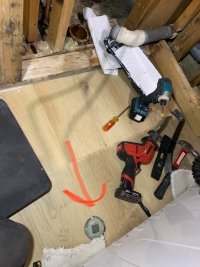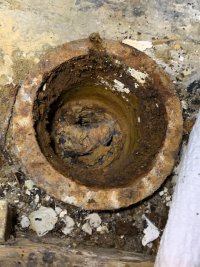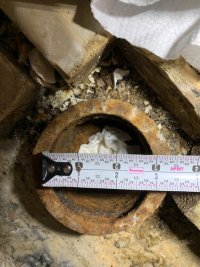Potatoes
New Member
Hello. We have a 1st floor laundry room wall open. We took down some thin wood paneling which exposed some cracked and poorly surfaced drywall. We have some friends who do drywall for a living so it is easier for them to hang new sheets as opposed to sanding and patching what was there.
Once we took down the drywall I noticed some seepage around the cast iron flange pictured in the attached image when a nearby sink is running. The PVC is 2". I can't measure the outside diameter of the cast iron pipe as it is below to the concrete.
How do I repair that? Do I need some type of Fernco donut? If so, not sure how to determine what size to get and where to order from.
Thanks!
Once we took down the drywall I noticed some seepage around the cast iron flange pictured in the attached image when a nearby sink is running. The PVC is 2". I can't measure the outside diameter of the cast iron pipe as it is below to the concrete.
How do I repair that? Do I need some type of Fernco donut? If so, not sure how to determine what size to get and where to order from.
Thanks!

